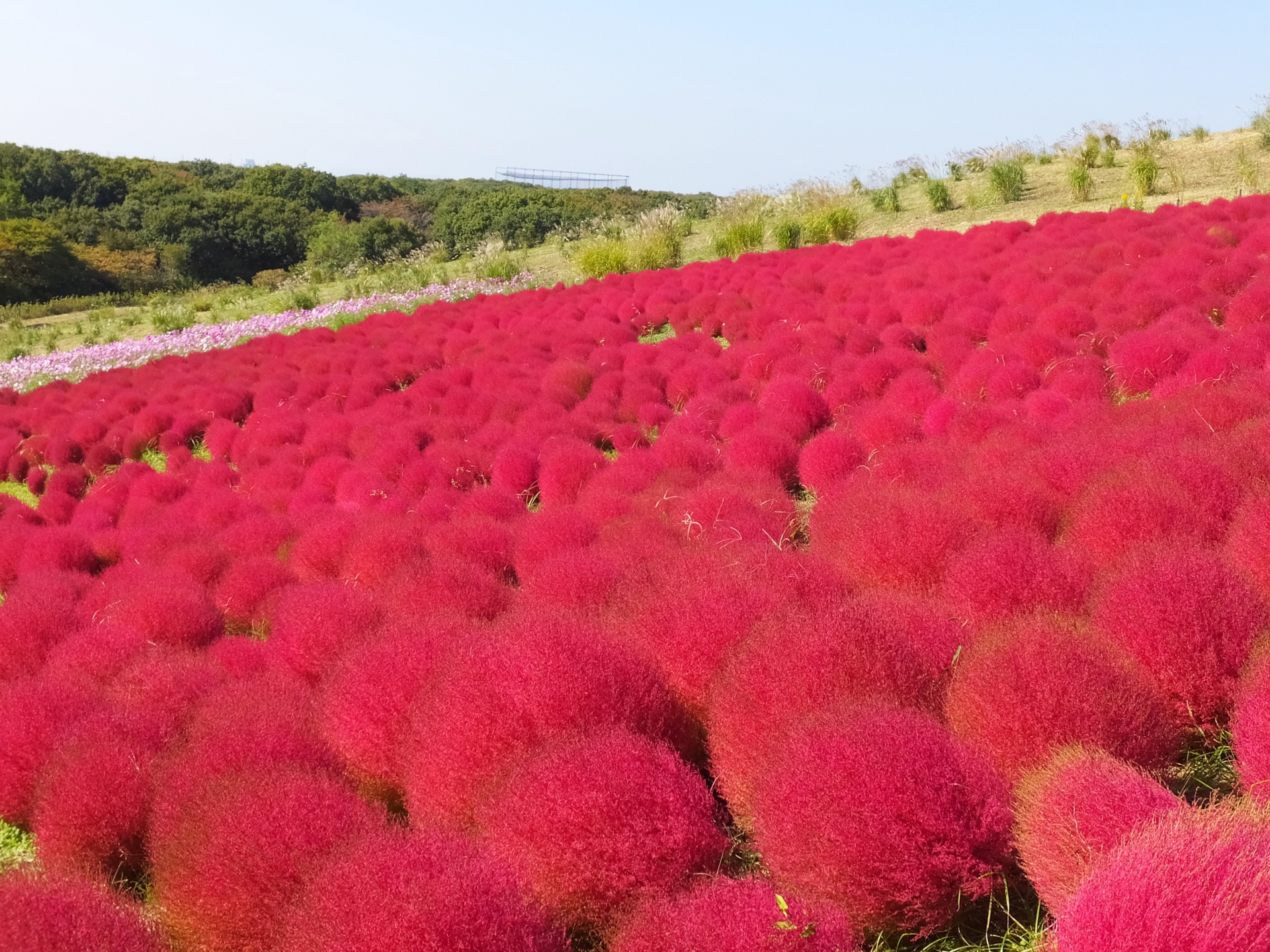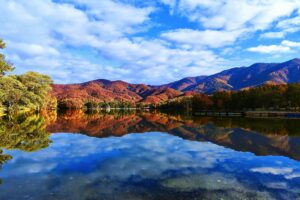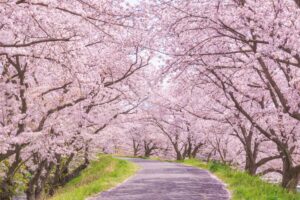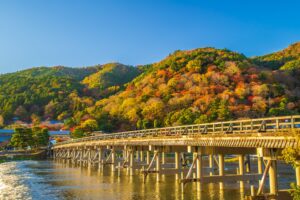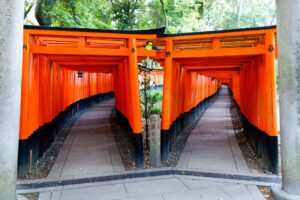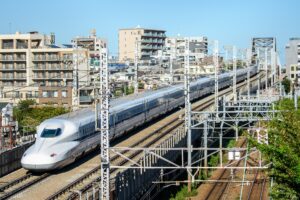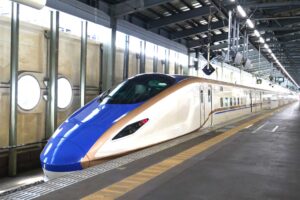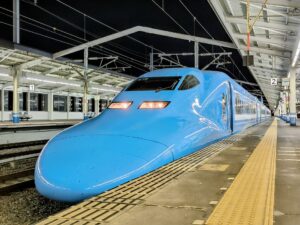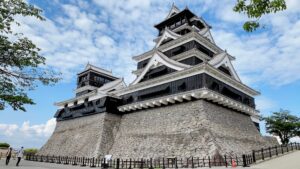If you’re planning a trip to Japan and love scenic nature spots, Hitachi Seaside Park in Ibaraki Prefecture is a must-visit destination. Known for its surreal flower fields that change with the seasons—from endless baby blue nemophila in spring to vibrant red kochia in autumn—this park offers a photogenic escape from city life. In this guide, we’ll explore the best times to visit, what flowers to expect by season, how to get there from Tokyo, nearby attractions, and practical travel tips for making the most of your trip.
Best Time to Visit Hitachi Seaside Park by Season
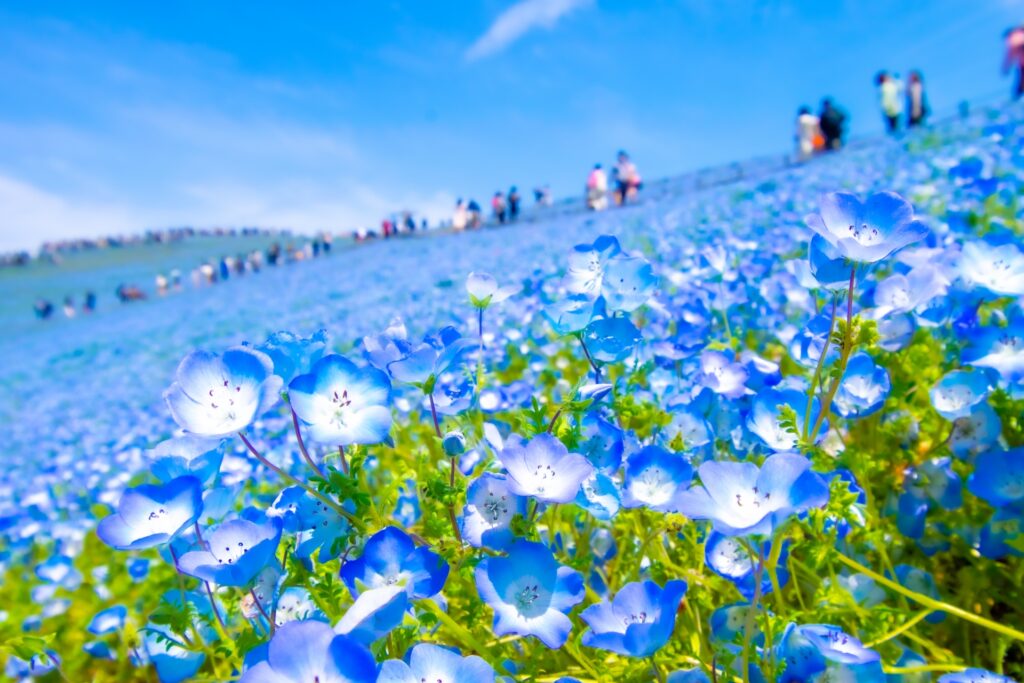
The park is a floral spectacle year-round, with each season bringing its own highlights. Below is a breakdown of what to expect each month:
| Month | Flower Highlights |
| March | Daffodils, early tulips |
| April | Tulips, baby blue nemophila (late) |
| May | Peak nemophila, poppies |
| June | Roses, early lavender |
| July | Zinnias, hydrangeas |
| August | Green kochia, sunflowers |
| September | Pampas grass, zinnias |
| October | Kochia (red), peak cosmos |
| November | Roses, isogiku (Japanese chrysanthemum) |
| December–Feb | Fewer blooms, cycling, walking trails |
Spring – Baby Blue Nemophila (Late April to Early May)
Spring is the most iconic season at Hitachi Seaside Park, thanks to Miharashi Hill, which becomes a sea of soft baby blue with 4.5 million blooming nemophila. The best viewing time is typically from the last week of April to the first week of May. For the most striking photos, arrive early in the morning to capture the contrast of the blue blooms against the clear sky. Golden Week is peak season, so expect large crowds. Consider visiting on weekdays for a more relaxed experience.
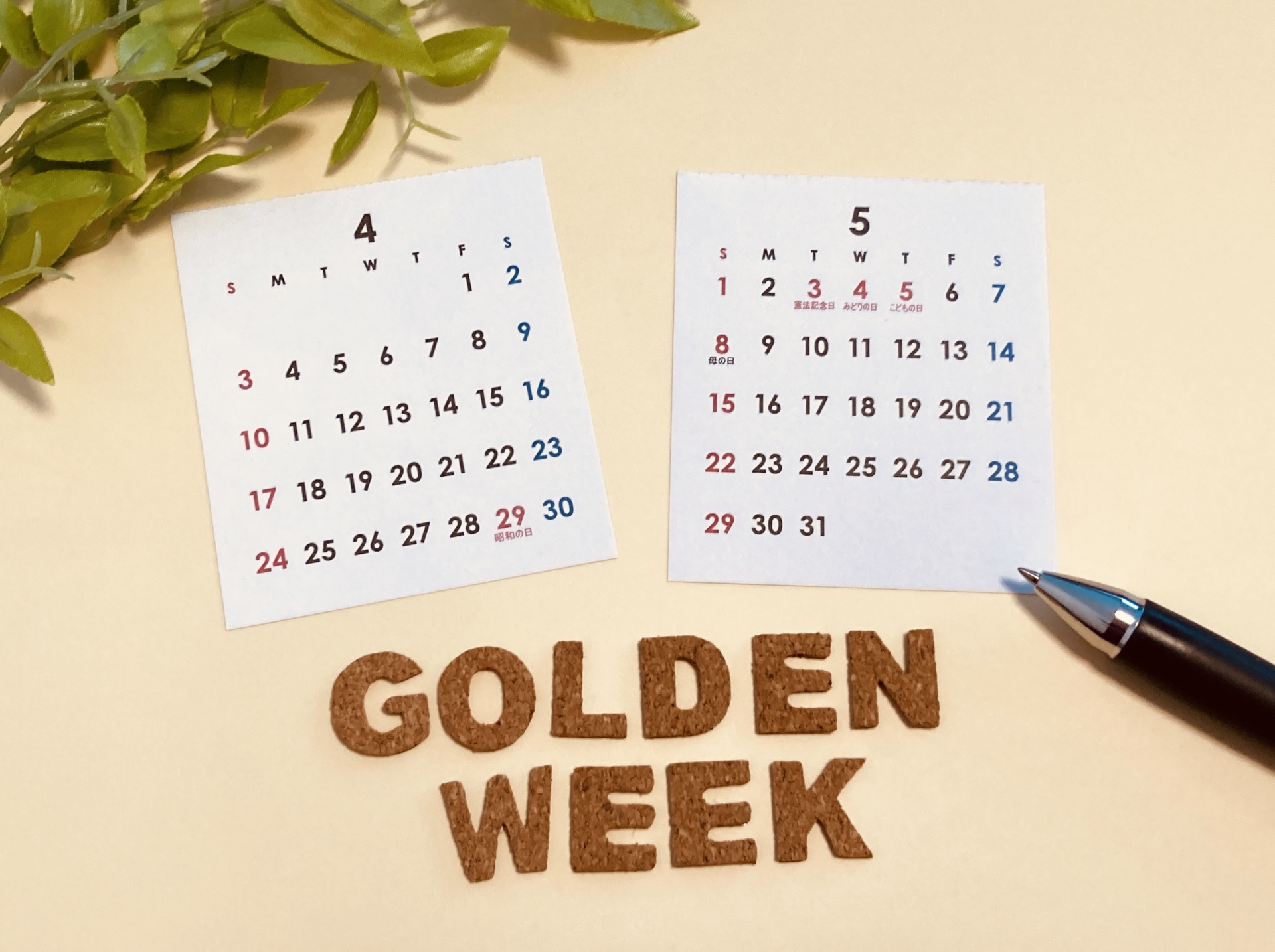
Summer – Zinnias and Hydrangeas (July–August)
In summer, colorful zinnias and blooming hydrangeas take center stage in July, followed by vibrant green kochia and towering sunflowers in August. Though temperatures can be high, the park provides shaded walking areas, rest stops, and misting stations. It’s a great time for families, with the amusement park and seasonal events in full swing. Bring sun protection, water, and take advantage of rental bicycles to cover more ground efficiently.
Autumn – Kochia Balls and Cosmos (October)
Autumn turns Miharashi Hill into a vibrant red canvas as kochia bushes transition from green to crimson. This transformation peaks around mid-October and is often accompanied by pink and white cosmos blooming nearby. The contrast between red kochia and blue skies makes for dramatic photos. For a quieter experience, aim for early morning or weekday visits. Cooler temperatures also make walking and cycling particularly enjoyable.
Winter – What to Expect (December–February)
While flowers are sparse in winter, the park remains a serene escape for nature lovers. Walking trails and cycling paths are open year-round, and the lack of crowds makes it ideal for peaceful strolls and photography. Some food stalls remain open during weekends, and occasional winter events offer a cozy, off-the-beaten-path experience. The cool air and golden light make this a great time for landscape and bird photography.
How to Get to Hitachi Seaside Park from Tokyo
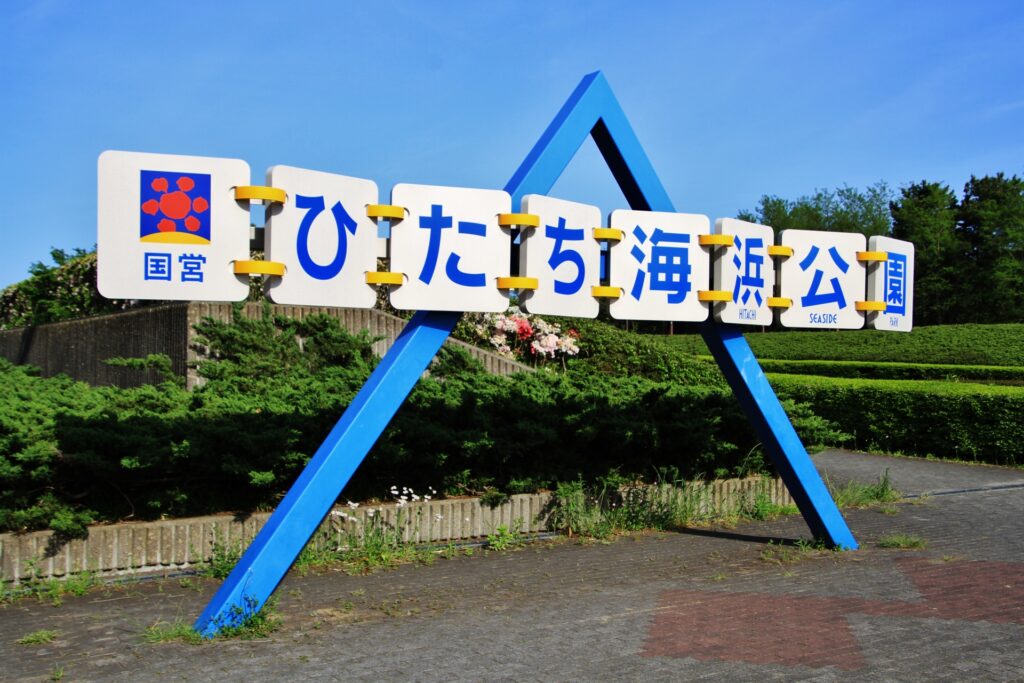
Admission Fee and Opening Hours
- Admission Fee:
- Adults (15+): ¥450
- Seniors (65+): ¥210
- Children under 15: Free
- Special rates apply during flower peak seasons (e.g., Nemophila Harmony or Kochia Carnival)
- Opening Hours:
- March 1 – July 18: 9:30 AM – 5:00 PM
- July 19 – August 31: 9:30 AM – 6:00 PM
- September 1 – October 31: 9:30 AM – 5:00 PM
- November 1 – end of February: 9:30 AM – 4:30 PM
- Closed Days:
- Every Tuesday (or the following day if Tuesday is a national holiday)
- December 31 – January 1
- The first Monday to Friday in February (maintenance period) Hitachi Seaside Park is easily accessible from Tokyo, making it perfect for a day trip.
- Train: Take the JR Joban Line from Ueno Station to Katsuta Station (approx. 1 hour 15 min via Limited Express Hitachi). Then, take a 15-minute bus or taxi to the park.
- Cost: Around ¥3,890 one way. Covered by the Japan Rail Pass.
- Day Tours: Some travel agencies offer direct day tours, especially during nemophila and kochia seasons.
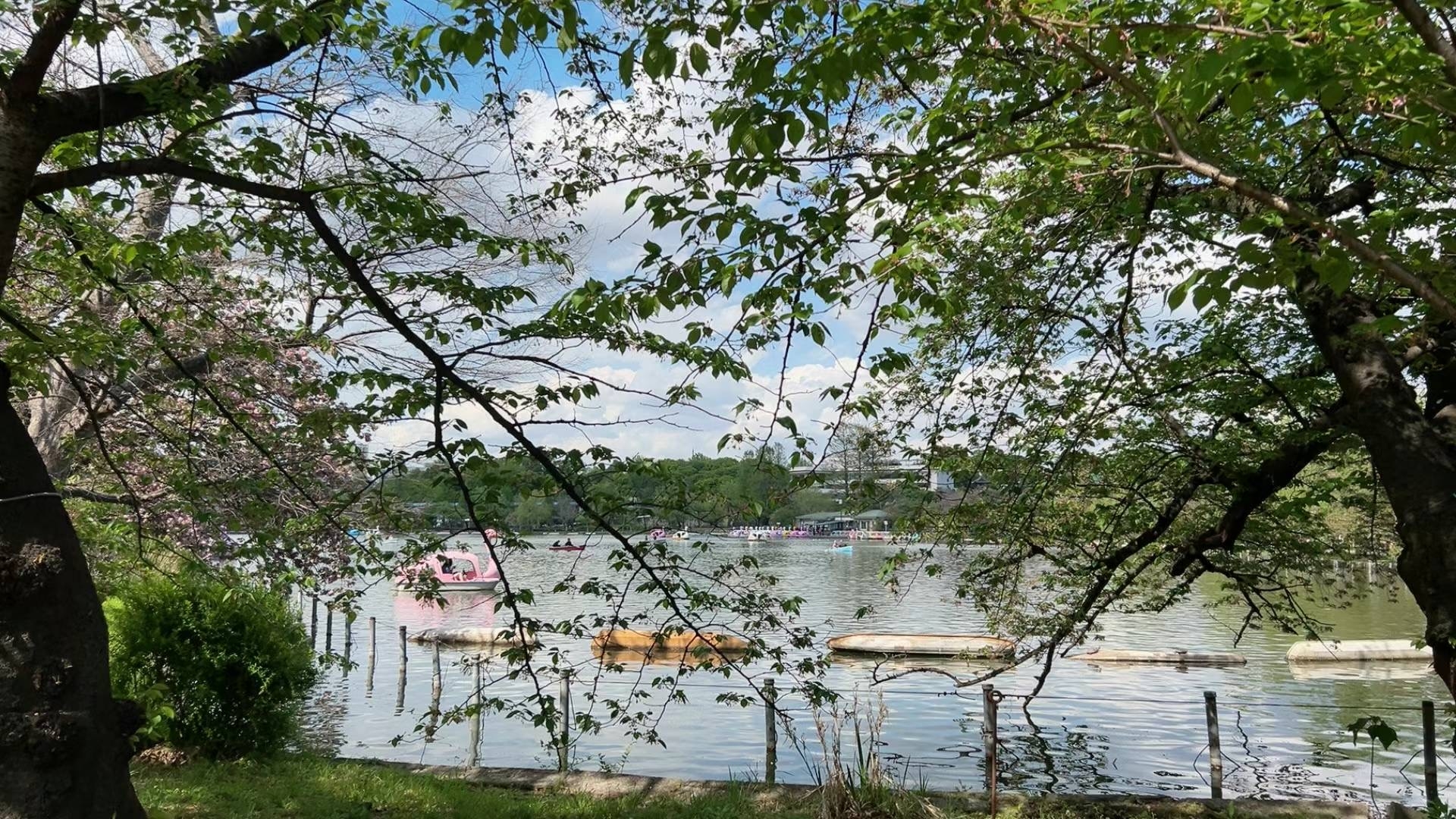
What to Do at Hitachi Seaside Park
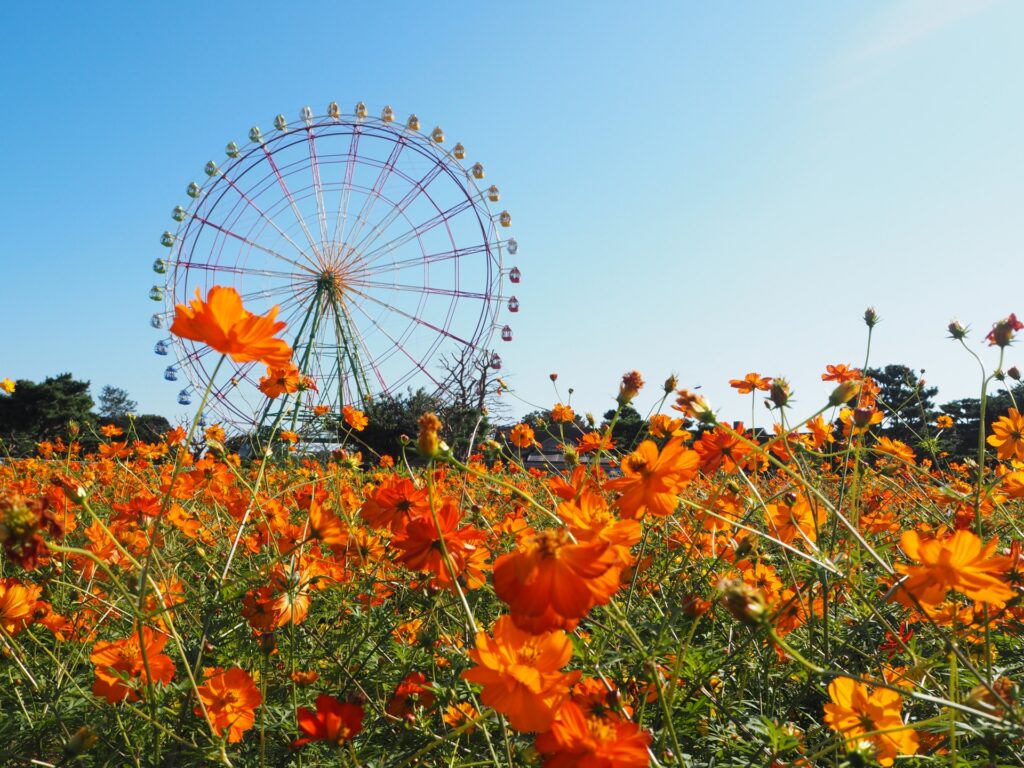
The park is not just about flowers. Here’s what you can enjoy:
- Flower Viewing: Seasonal fields including nemophila, tulips, roses, sunflowers, kochia, and cosmos.
- Biking Paths: Rent a bike and cruise through scenic routes.
- Picnic Areas: Shaded areas with benches perfect for a packed lunch.
- Cafés & Food Stalls: Local treats and light meals.
- Amusement Park (Pleasure Garden): Rides including a Ferris wheel, roller coaster, and kid-friendly attractions.
- Accessibility: Wheelchair and stroller rentals available. The park is flat and well-paved with accessible restrooms.
Photography Tips for Each Season
To make your photos Instagram-worthy:
- Spring: Arrive before 9 AM for soft light. Use a wide-angle lens to capture the vastness of Miharashi Hill.
- Summer: Use a polarizing filter to cut glare. Highlight sunflowers against the blue sky.
- Autumn: Shoot during golden hour to enhance the red kochia hues.
- Winter: Use long shadows and the low sun for dramatic landscapes.
- Tripods & Drones: Tripods allowed; drones are prohibited.
- Top Spots: Miharashi Hill, Dune Garden, and Pleasure Garden Ferris wheel.
Food and Facilities in and Around the Park
Inside the park:
- Food Trucks & Cafés: Serve local fare like curry, yakisoba, and seasonal sweets.
- Rest Areas: Plenty of benches, toilets, and shaded zones.
- Lockers: Available near main gates.
- Rental Services: Bicycles, wheelchairs, and strollers available.
Nearby in Hitachinaka:
- Restaurants: Sushi, ramen, and seafood from Nakaminato Fish Market.
- Shopping: Small local shops and convenience stores near Katsuta Station.
Day Trip Ideas Near Hitachi Seaside Park
Extend your visit by exploring nearby attractions:
- Aqua World Oarai: One of Japan’s largest aquariums, just 30 minutes away.
- Nakaminato Fish Market: Enjoy fresh seafood and sushi.
- Oarai Isosaki Shrine: Historic seaside shrine with a torii gate on the rocks.
Sample Itinerary:
- Morning: Hitachi Seaside Park (flower viewing & biking)
- Lunch: Nakaminato Fish Market
- Afternoon: Aqua World or Oarai Isosaki Shrine
Visitor Tips and FAQs
How much time should I spend there? At least 3–5 hours to explore main flower areas and enjoy leisure activities.
What should I bring? Comfortable shoes, sun protection, water bottle, and a camera.
Is it wheelchair/stroller accessible? Yes. The park is flat, and rentals are available.
What’s the etiquette for visiting parks in Japan? Don’t pick flowers, stay on marked paths, and be respectful of quiet areas.
Conclusion – Why Hitachi Seaside Park Should Be on Your Japan Itinerary
Hitachi Seaside Park is a seasonal wonderland, offering breathtaking views and diverse experiences throughout the year. Whether you’re drawn by spring’s blue nemophila, autumn’s fiery kochia, or peaceful winter walks, the park delivers a rich escape just a train ride from Tokyo. With its blend of natural beauty, family-friendly activities, and easy accessibility, it’s a perfect addition to any Japan itinerary. Check the bloom calendar, plan your visit early, and get ready for a day of color, relaxation, and unforgettable memories.

